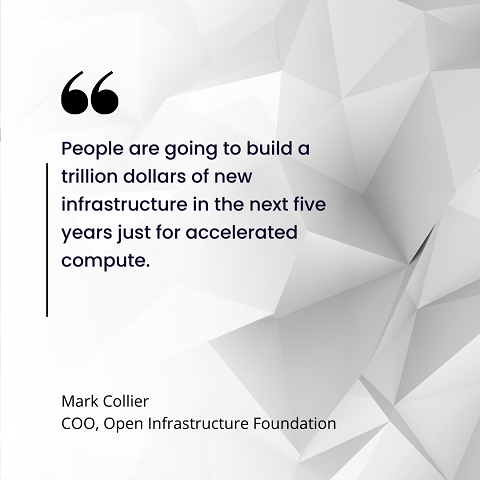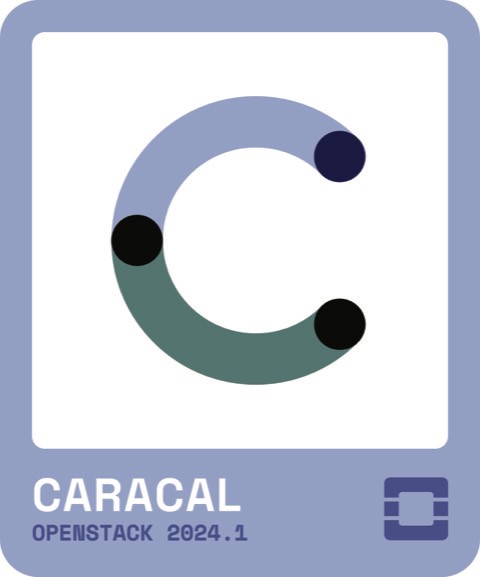The open source OpenStack cloud platform received its first major update of 2024 today with the release of OpenStack Caracal.
The new release is the 29th version of the open source cloud infrastructure software and follows OpenStack Bobcat, which debuted in October 2023.
With the new release, the Open Infrastructure Foundation is looking to support a pair of specific use cases: the emerging needs of AI workloads and users looking for VMware alternatives. OpenStack Caracal delivers incremental improvements to support these use cases while advancing OpenStack overall.
Key highlights of OpenStack Caracal include:
- Nova compute service: Enhancements for AI and high-performance computing (HPC) workloads with virtual GPU (vGPU) live migration
- Ironic bare-metal service: Transition to Redfish API for hardware management
- Designate DNS service: Support for catalog zones to improve DNS server scalability
- Octavia load balancing: Use of single root I/O virtualization (SR-IOV) for load balancing and virtual IP (VIP) ports to reduce latency
- Security: Upgrades such as role-based access control (RBAC), auto-closing expired sessions in Nova
- Adaptability: Latest software and hardware support including Django, Node.js, and Cinder drivers
OpenStack in the past has helped to enable different types of industry transitions, including the move of the telecom industry to 5G. The hope is that OpenStack Caracal will enable it to play a similar role in the current movement toward AI.

"People are going to build a trillion dollars of new infrastructure in the next five years just for accelerated compute," Mark Collier, chief operating officer at the Open Infrastructure Foundation, told ITPro Today. "I think it's just an exciting time for the Open Infrastructure Foundation to do this work and make sure that we have the software — and it's open source — to power this trillion dollars of infrastructure."
OpenStack Nova Embraces Virtual GPU Live Migration for AI Workloads
Among the foundational components of OpenStack is the Nova compute service.
Thierry Carrez, general manager at Open Infrastructure Foundation, told ITPro Today that Nova gained support for vGPUs with the Bobcat update in 2023. What was lacking, however, was support to live migrate workloads to another virtual machine (VM). Live migration is the ability to move a running virtual machine from one physical machine to another with little or no downtime.
OpenStack Caracal's new vGPU live migration feature allows workloads using vGPUs to now be live migrated between VMs. This completes the user experience for GPU-accelerated workloads in OpenStack by enabling workload mobility even when tied to a specific GPU hardware resource. It addresses gaps that existed for more advanced use cases needing high availability, like AI training jobs that may need to be moved during long-running processes.
The ability to abstract and effectively optimize virtual hardware resources is a critical capability not just for AI but any type of HPC workload.
"Nova developers are pushing the envelope in those high-performance use cases to make sure that we get the most out of the hardware that is connected," Carrez said.

Deeper Role-Based Access Control Improves Security Posture
Security is another core theme that permeates the OpenStack Caracal release.
Among the many security-focused initiatives is an effort to upgrade dependencies to the latest secure versions to ensure projects stay up-to-date on patches and fixes, according to Carrez.
There has also been a concerted effort to transition to RBAC models across more OpenStack projects, including the Ironic bare-metal service, Keystone identity service, and Magnum container orchestration, among others. This allows for finer-grained authorization of actions.
OpenStack Caracal is also noteworthy in that it is what the Open Infrastructure Foundation refers to as a Skip Level Upgrade Release Process, or "SLURP," release. OpenStack has new releases every six months, but not every operator wants to upgrade that fast. With a SLURP release, users of the OpenStack Antelope milestone that came out in 2023 can update directly to Caracal.
"We've tested that type of updates before, and it worked, but it wasn't officially supported," Carrez said. "Caracal is the first release that you can upgrade directly from the year before, instead of six months before."
About the author
 Sean Michael Kerner is an IT consultant, technology enthusiast and tinkerer. He consults to industry and media organizations on technology issues.
Sean Michael Kerner is an IT consultant, technology enthusiast and tinkerer. He consults to industry and media organizations on technology issues.




